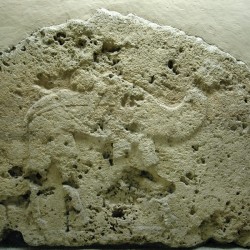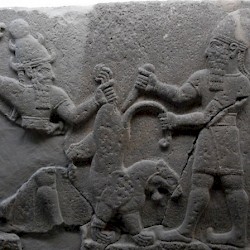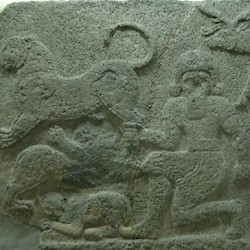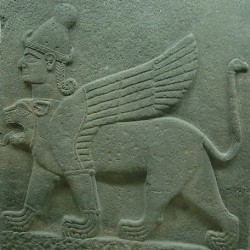Neo-Hittites
Q770281Neo-Hittites or Syro-Hittites: modern name for the successor states of the Hittite Empire, which had desintegrated in the early twelfth century BCE.
Demise of the Hittite Empire
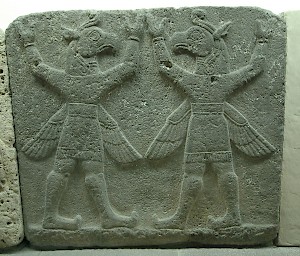
In the early twelfth century BCE, the Mediterranean Bronze Age system collapsed. Hattusa, the capital of the Hittite Empire in central Anatolia, had already been evacuated in the final decades of the thirteenth century; the empire itself, which had dominated Anatolia and northern Syria, disappeared; many towns in the Levant were sacked; the Mycenaean culture in Greece came to an end; in 1177 BCE, king Ramesses III of Egypt had to defend the Delta against invading "Sea People". This crisis marks the beginning of the "Dark Age", which lasted until about 800 BCE. However, these four centuries are not completely dark.
The vacuum created by the demise of the Hittite Empire was filled by several new nations - the Aramaeans in Syria are a case in point - and states. Some of these new, Iron Age principalities, however, continued the languages and traditions of the Bronze Age Hittites and are therefore called "Neo-Hittites". This label is of course a bit subjective, but it is certainly significant that the neighbors of these states called them Hittite.
Tarhuntassa and Karchemish
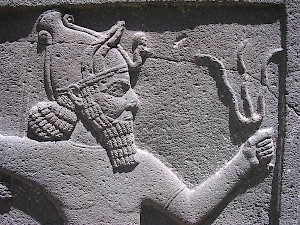
Initially, there were two main successor states, Tarhuntassa in southern Anatolia and Karchemish in Syria and the land of the Upper Euphrates. The ruler of this second state called himself “great king” and appointed other rulers, which soon became more or less independent. They include Malida (later known as Melitene) and Kummaha (in the Classical period known as Commagene) in the northwestern arc of the Euphrates; Kurkuma along the Upper Pyramos; Halpa (i.e., Aleppo) and Patina (along the Lower Orontes). Sam'al started with kings with Neo-Hittite names, but soon was ruled by kings with Aramaean names.
Although Karchemish had lost control of its northern and western territories, it remained an important kingdom. Uriah the Hittite, one of the courtiers of king David in Jerusalem, must have been from Karchemish.note
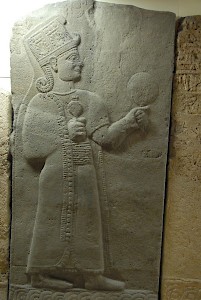
Within the successor states of Karchemish, we find people who spoke Aramaic. Some principalities had a dynasty that also spoke this language. However, it is possible to overstate the importance of the difference. In Sam’al, the rulers first had Hittite names and later Aramaic names, but there appears to have been no great break.
The disintegration of Tarhuntassa is less well understood, but is clear that it disintegrated into four parts: north of the Taurus Mountains was Tabal, which included Tyana and several other towns; in the western Taurus was Hilakku and in the coastal plain was Que (with important centers in Adana and Karatepe). The two last-mentioned successor states would later reunite and become known as Cilicia. What remained of Tarhuntassa, essentially the valley of the Calycadnus river, was later part of Pamphylia.
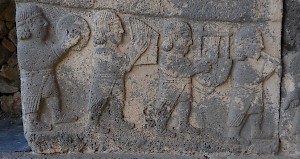
In the end, most of these states were taken over by the Assyrians, who had finished their conquest by the end of the eighth century BCE. Only Tabal and the core of Tarhuntassa retained their independence and would survive as Cappadocia and Pamphylia.
Artistic Styles
The art of the Neo-Hittites is documented on various sites. Art historians distinguish two periods:
- a "Traditional Style I" (c.1050-c.850 BCE), which was essentially a continuation of the Empire's art and is found in a/o Arslantepe in Malida/Melitene;
- a "Traditional Style II" (c.850-c.700 BCE), which is more open to Aramaic and Assyrian influences and can be found in Karchemish and Karatepe in Que.
Reliefs from Arslantepe
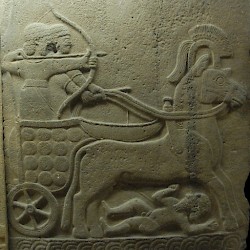 Melitene, Relief of a chariot |
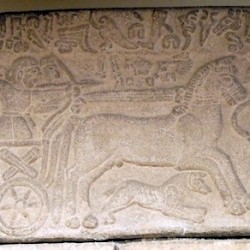 Melitene, Inscription and relief of a lion hunt |
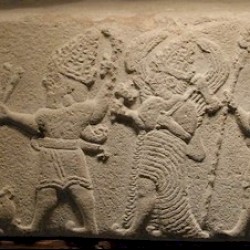 Melitene, Relief of several gods |
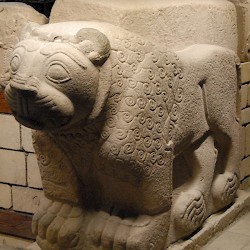 Melitene, Lion Gate, lion |
Reliefs from Karchemish
Reliefs from Karatepe
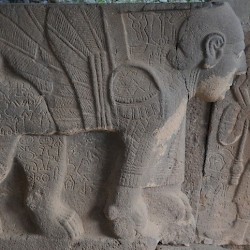 Karatepe, North Gate relief, Sphinx (copy) |
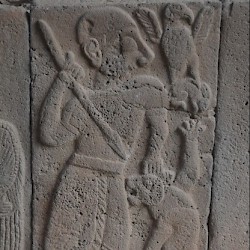 Karatepe, North Gate relief, Fight against a lion (copy) |
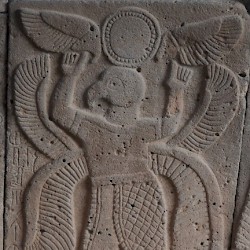 Karatepe, North Gate relief, Winged demon (copy) |
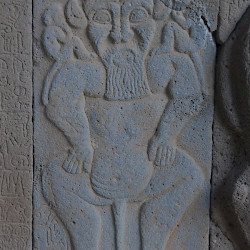 Karatepe, North Gate relief, Bes |
